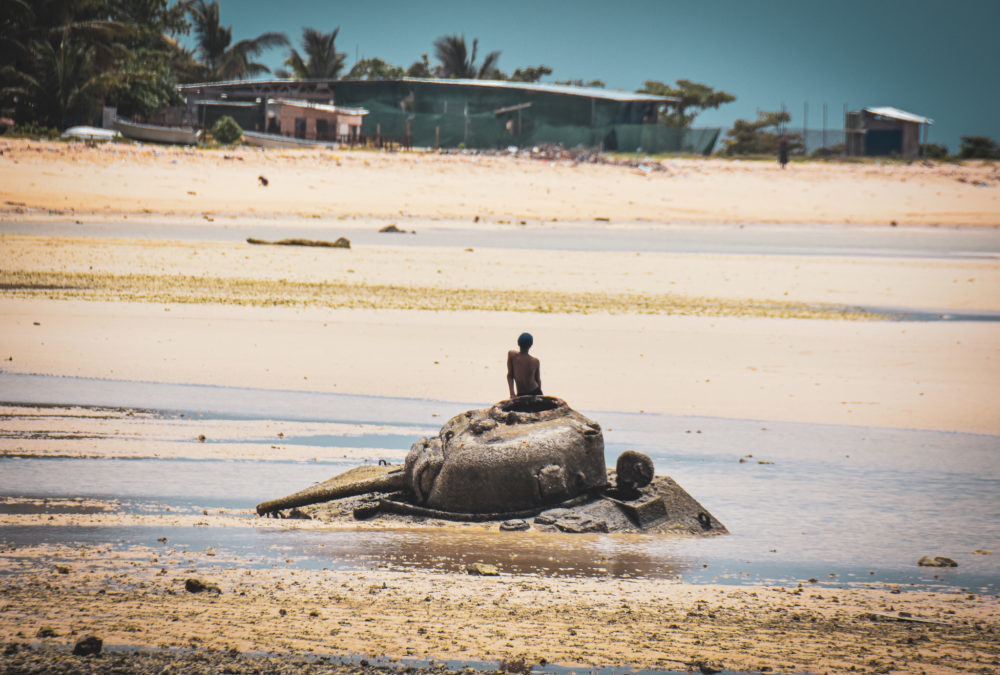March 2023: As part of a larger multi-country tip on our baby moon, Paula and I traveled to Tarawa for 4 days. Tarawa is the location of one of the fiercest battles in the pacific arena of WWII and the island is full of war relics to this day. The goal of our trip was to learn about the people that live in the remote island and to learn more about the WWII battle. This is the story of our trip.
About Tarawa
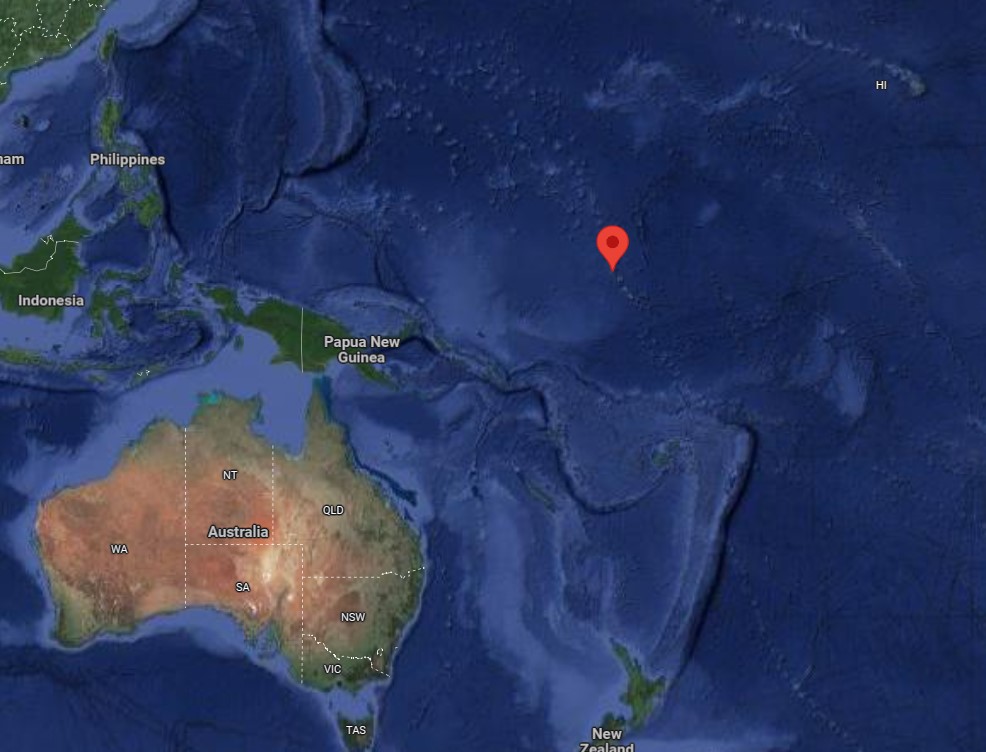
Location of Tarawa
Tarawa is a small low-lying island that is part of the Gilbert chain of islands just one chain of islands in the broader island archipelago nation of Kiribati that stretches thousands of miles across the Pacific Ocean along the Equator. Tarawa with a population of around 100,000 people is Kiribati’s most populated island and most of this population is concentrated in the south of Tarawa in Betio. Betio was also the scene of one of the most horrific battles in World War II. WWII Japanese Admiral Keiji Shibasaki bragged that the U.S. couldn’t take Tarawa with a million men in 100 years. He was wrong about this but right in that the battle of Tarawa would become one of the bloodiest battles of the Pacific and in just 72 hours the fighting claimed the lives of 1000 US Marines/Navy and 5000 Japanese soldiers. The Japanese fought to the very end-only 17 survived the battle. Today, there are reminders of the cruelty of war all over Betio Island. Children play on beached tanks at low tide, machine gun nests are perched near a volleyball court, and people have built their homes on top of concrete bunkers. Live ordinances and the forgotten bones of fallen soldiers continue to be unearthed beneath people’s houses.
Impressions of Tarawa
We ended up coming to Tarawa a week earlier than expected because of a change in plans brought on by our flight cancellation from Nauru to Fiji. Instead, we changed our flight on Nauru Airlines and flew to Tarawa, a one-hour flight. This was the only way to salvage our trip. We arrived Friday night and our hotel, Betio Lodge picked us up at the airport giving us an hour in the shuttle van to develop our first impressions of Tarawa on the drive to the hotel. Evidently it was one of the few nights during the month when everyone gets paid and most residents were celebrating, and the main street was crowded and the driving very slow. The constant speed bumps in the road also made sure of this. It became obvious to me right away by looking at the run-down houses in Tarawa, prolific garbage, and rusted out abandoned cars, that Tarawa would likely be one of the most impoverished islands I have visited in the Pacific. Alcohol abuse I was warned is also a problem, and because of this so are violence and drunk driving. For this reason, and because of packs of unruly stray dogs, we were advised that walking the streets of Betio at night wouldn’t be safe.
I chose Betio Lodge because it was right in the thick of the part of Tarawa that experienced the fighting in World War II and was withing walking distance of all of the WWII relics. As soon as we could, the next morning, we set off the explore Betio. Within minutes of leaving the A/C cooled hotel room, I was drenched by sweat in the intense equatorial heat. Intermittent tropical downpours left the dirt streets covered in puddles. The streets were rampant with stray dogs, garbage and feces from humans and dogs. The houses were a hodge podge of the traditional with some thatch roofing and walls, combined with any other available random construction materials such as metal freight containers, recycled junk, even relics from the WWII battle were used for house construction. One houses fence was made of tank tracks and numerous other houses were built on top of Japanese concrete bunkers and the bunkers were used for storage. Because of the immense heat, most people had open walls to allow air ventilation. Abandoned rusting ships were strewn across the lagoon and kids played on top of them while residents without plumbing in their houses relieved themselves in waist deep water, despite my best efforts, I stepped in feces and spent an hour sanitizing the flip flops.
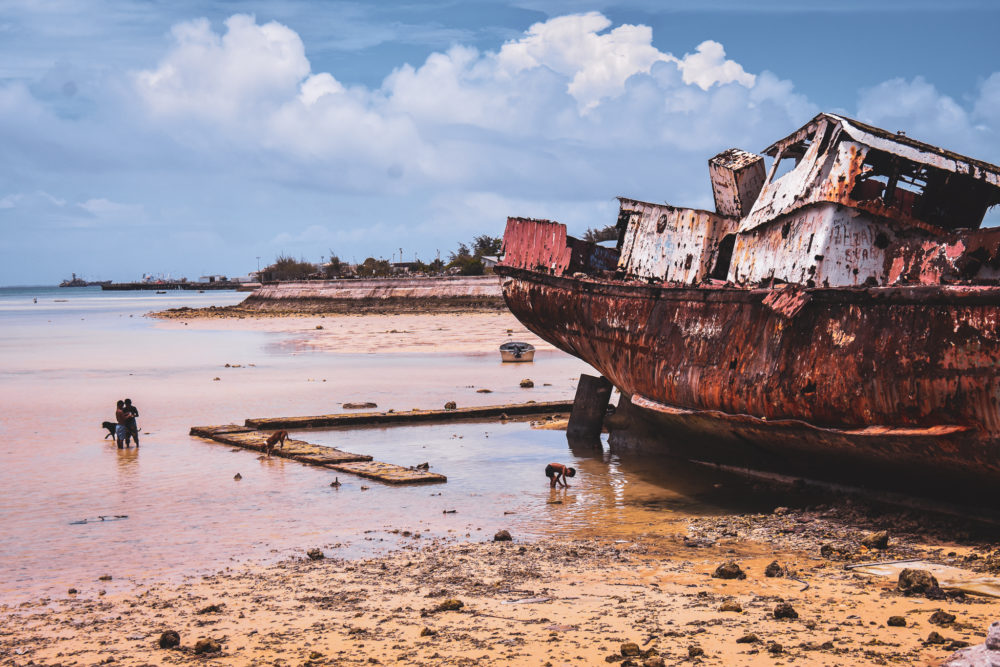
Abandoned Ships
Paula and I explored Betio on our own meeting friendly locals. It didn’t take long for us to find WWII relics. The most interesting one was the American Sherman tank on the beach that at low tide was exposed with a child playing on top of it. I tried to imagine the absolute hellish scene that must have taken place on this beach during the battle. In all likelihood, American soldiers were killed in the Sherman tank that now served as a playground for children.
Everywhere I went, there were reminders of WWII and people living, playing and going about their lives among tanks, guns, bunkers……Before the trip, I wondered what it might be like for the thousands of residents of Betio to live on top of the cursed battlefield where so many soldiers were slaughtered, many still buried in mass burials beneath their houses. After visiting Betio, I realized that they have manage to dissociate themselves from Betio’s brutal past and are just trying to survive on the little bit of dry land that is left in Tarawa despite the rising sea waters and beach erosion.
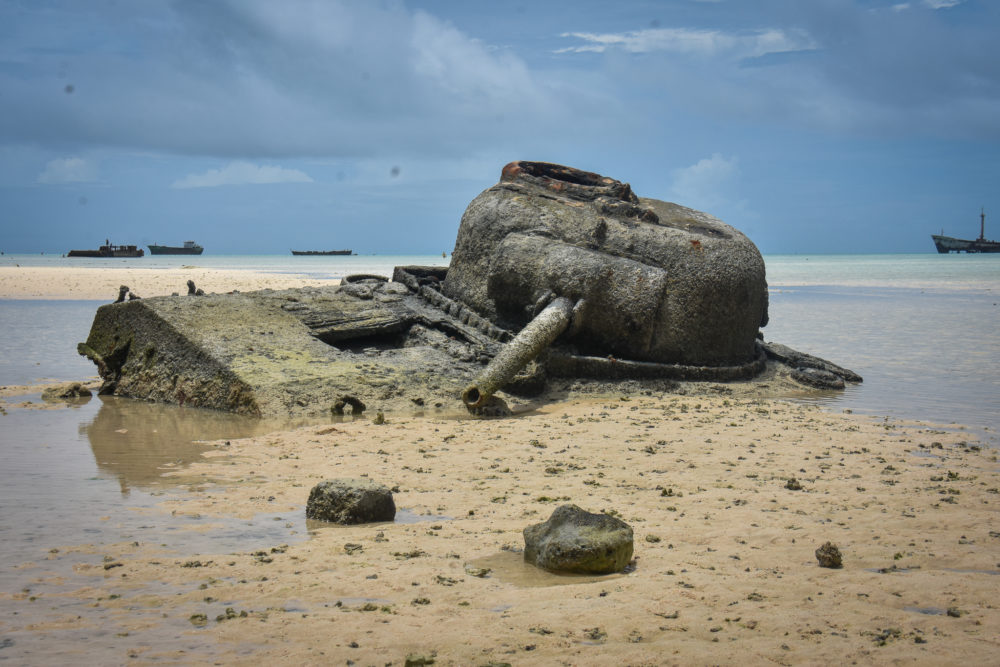
American Sherman Tank
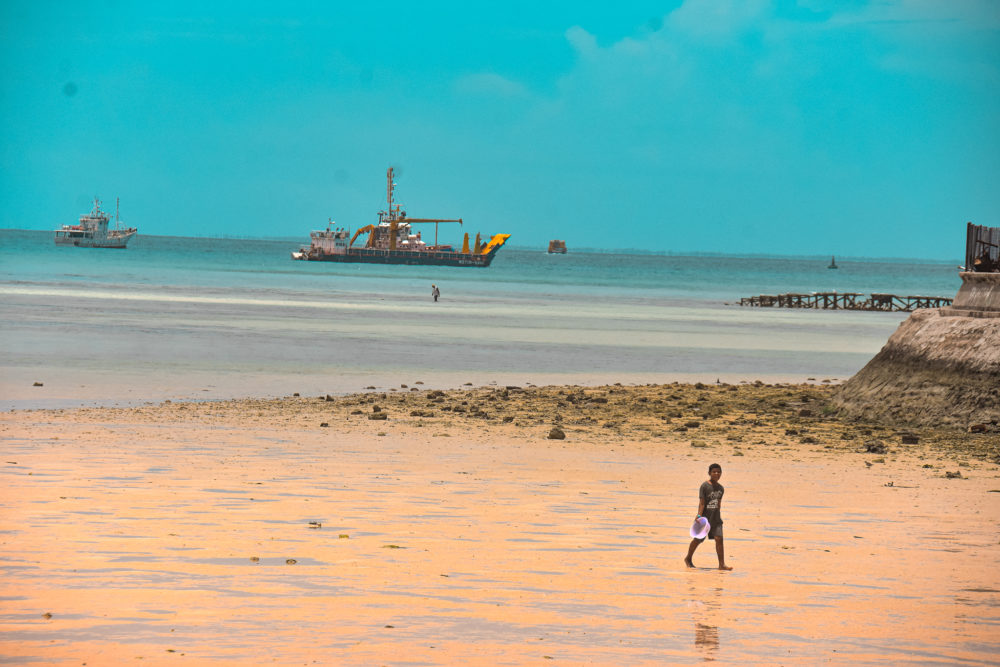
Kid walking along beach with abandoned ships in background
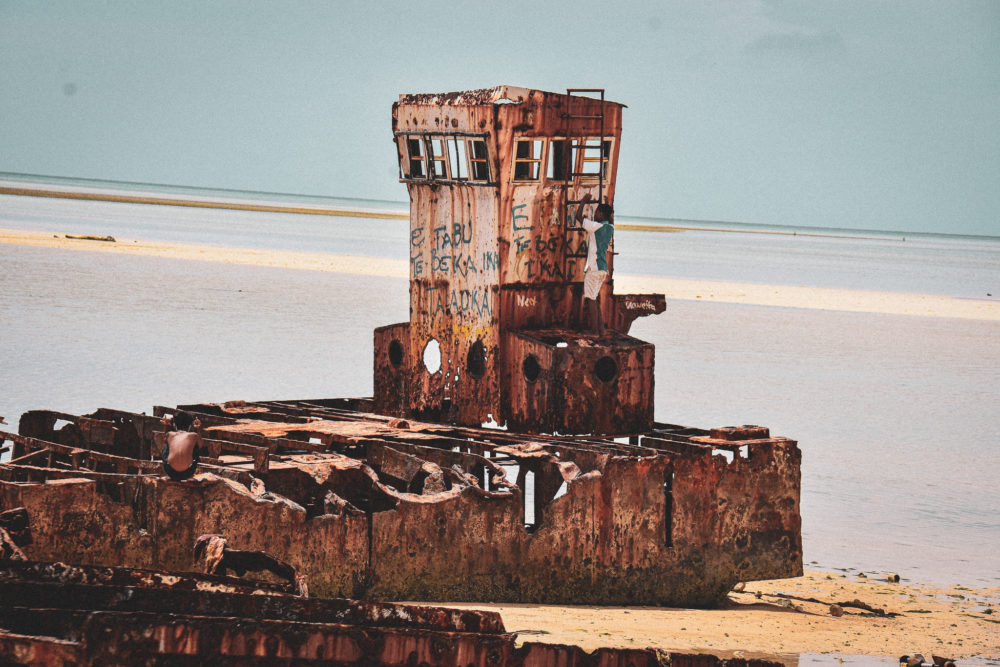
Kid playong on a Japanese WWII Ship
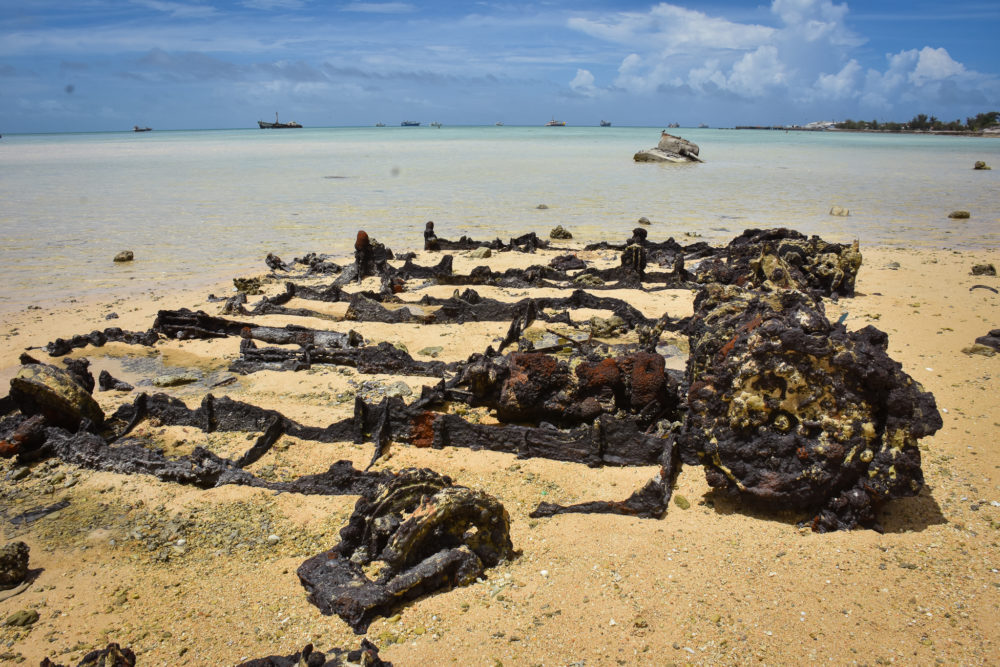
Tracks from a landing boat and a Sherman tank in the background at low tide
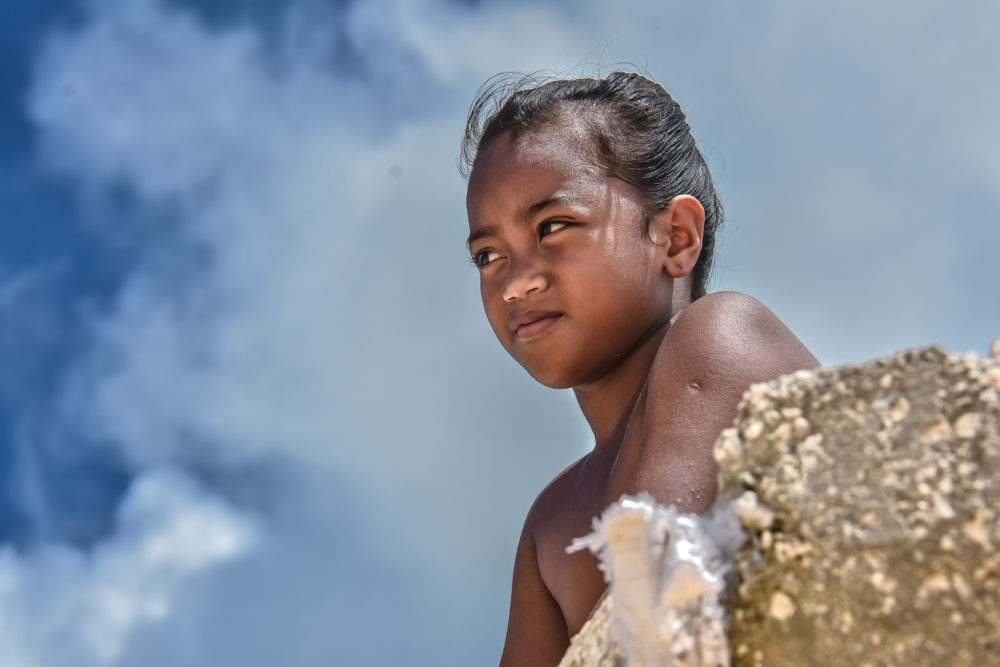
Young Tarawa girl on beach
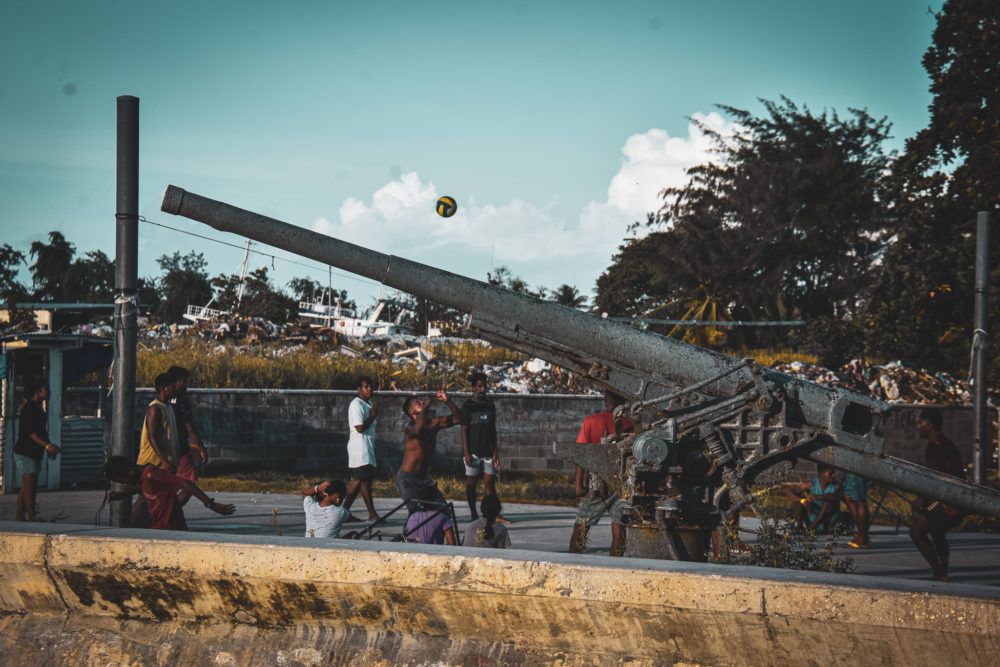
WWII Guns Next to the Volleyball Court
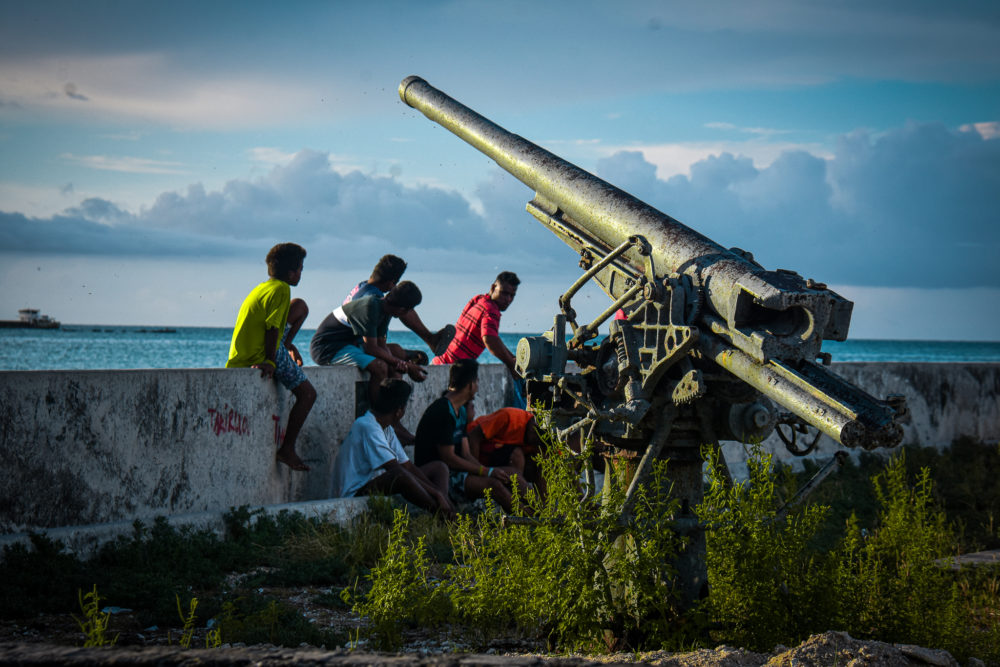
WWII Guns
The poverty, trash and human and dog waste all too common on the streets, and beaches of Betio was disheartening. There were so many people reliving themselves in the water because of a lack of plumbing. Even as I took this photo of Paula a man urinated in the open on the beach right behind me. The beaches of Betio were definitely not a place for tourists, if there were any, to swim or lounge around.
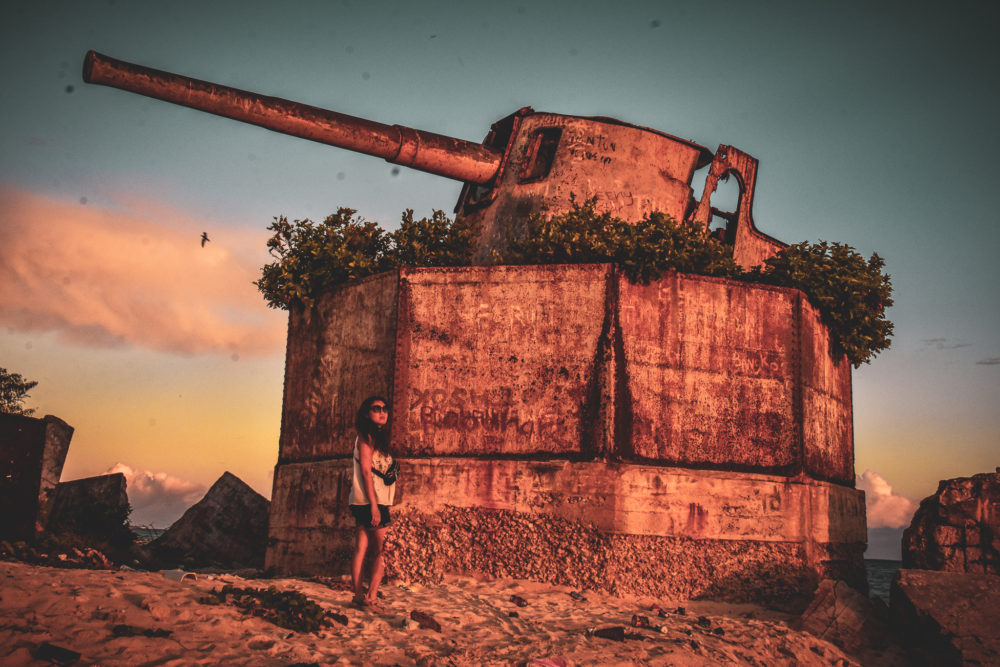
Paula near one of the big guns
We did enjoy the people of Tarawa. They were quick to exchange a smile and everyone we met on the streets was friendly. At one point to escape the unbearable sun, we walked into a tent encampment where a group of 30-40 people with their children were relaxing in the shade, and we say on an empty chair. Soon one by one a group of young girls approached us out of curiosity giggling. Their parents informed us that the gathering was a memorial celebration for the family’s great grandfather. We felt bad for intruding, but the families insisted we stay for as long as we liked.
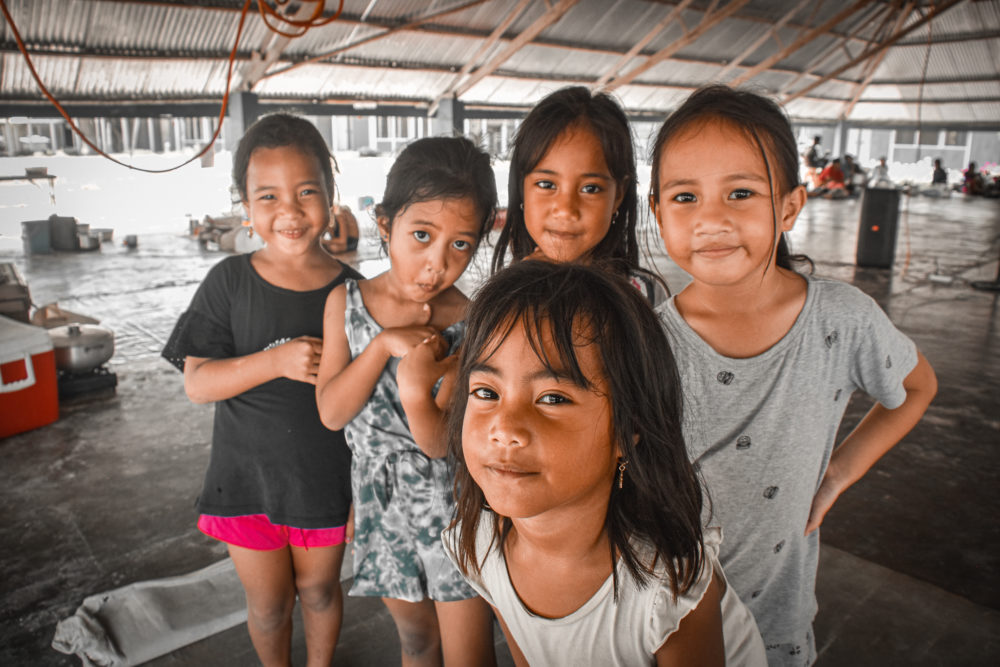
Girls we became friends with at a families get together we stumbled across.
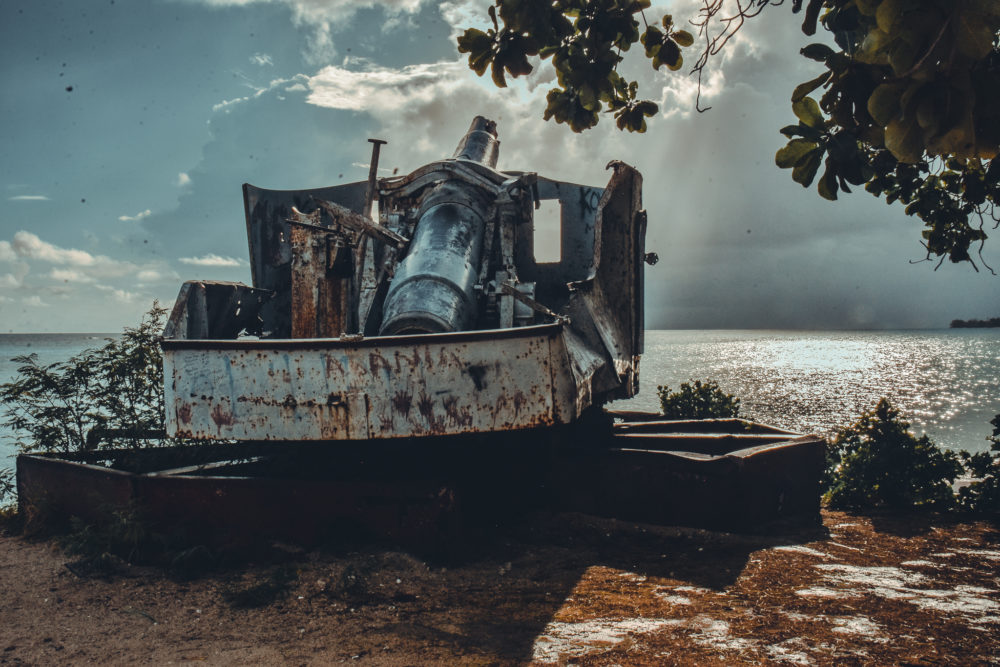
WWII Gun
Many of the WWII ruins are abandoned and modern life is creeping up around them. The Japanese HQ building where the commanders of the Imperial navy forces where bombed and killed is now surrounded by a fence of a Mormon school.
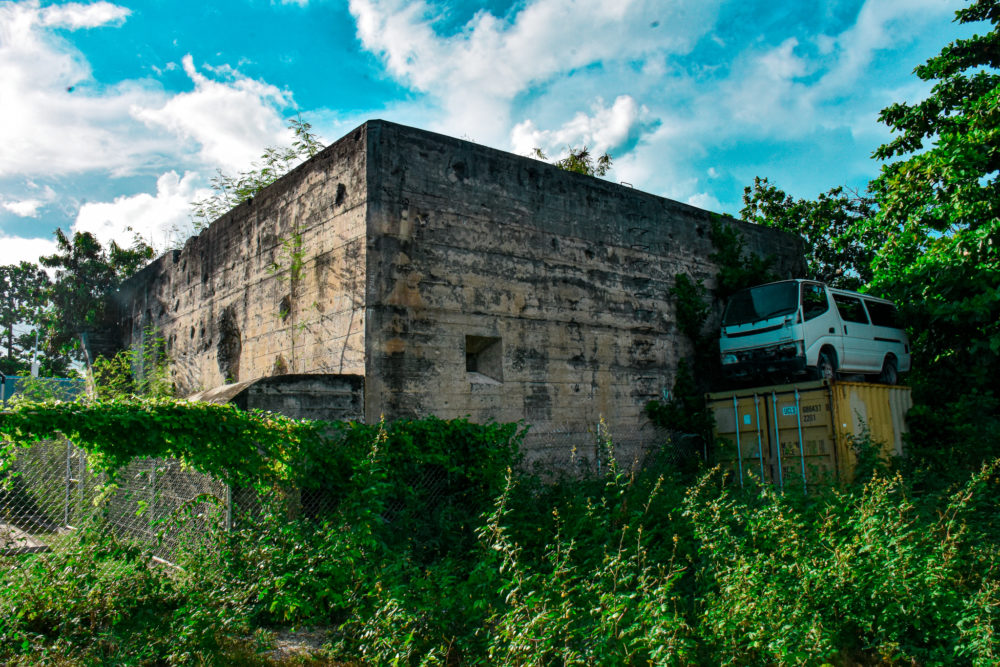
Japanese Command Structure Where Generals Were Killed
Most bunkers doubled as public toilets and were too disgusting to explore but there was one building used by the Japanese store power equipment that I found fascinating. The building is currently in ruins and located near a police station. The police use it to store old WWII corroded munitions, grenades, explosives that locals collect in their yards. Even though most devices have been rendered harmless by time, they have been so weathered over the years that some may potentially could explode just by touching them. The potential bombs are not safeguarded in any way and anyone can walk into the open building. When we arrived the police were barbecuing and drinking beers while an intoxicated wailed from the top of her lungs Exorcist style from a prison cell just a few feet away from one police officer tending the grill. Paula and I walked inside the building trying to avoid walking any where near the explosives srew haphazardly axross the ground. After we were in the building for a few minutes, one police officer ducked his head in to inform Paula that she was standing ona grenade. We decided to make that are cuo to go.
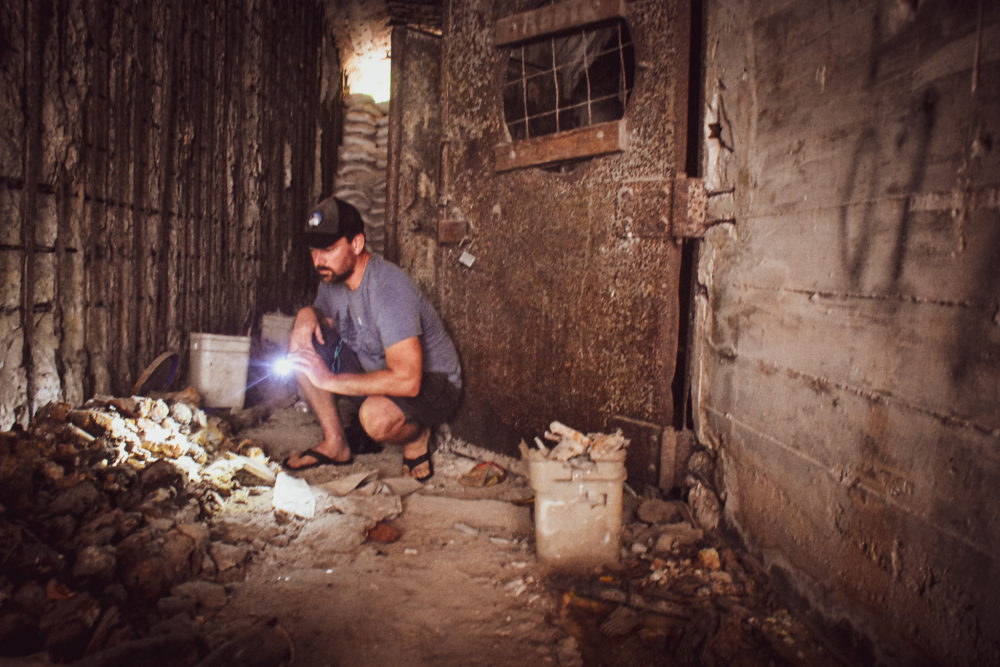
Me looking at WWII Munitions in a Japanese Bunker
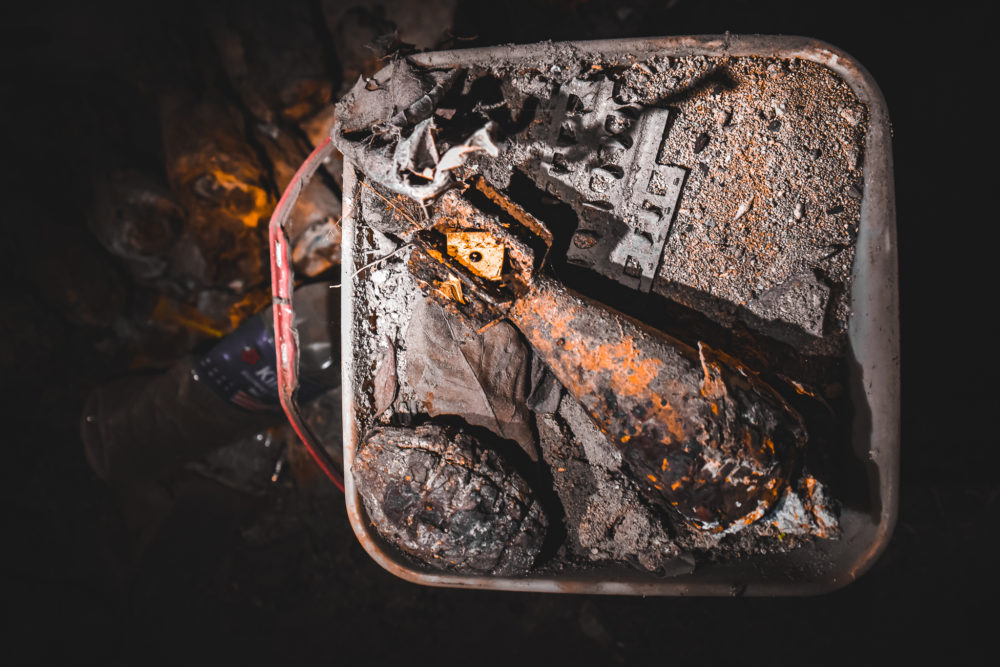
Japanese Grenades
Everyone was so friendly in Betio that we could just walk up to the houses of people that have incorporated Japanese bunkers into their homes. This family just giggled for my camera and the father of the house shook my hand and welcomed us. I discovered that most people of Tarawa have high opinions of Americans especially the old Marines that liberated them from the Japanese in WWII.
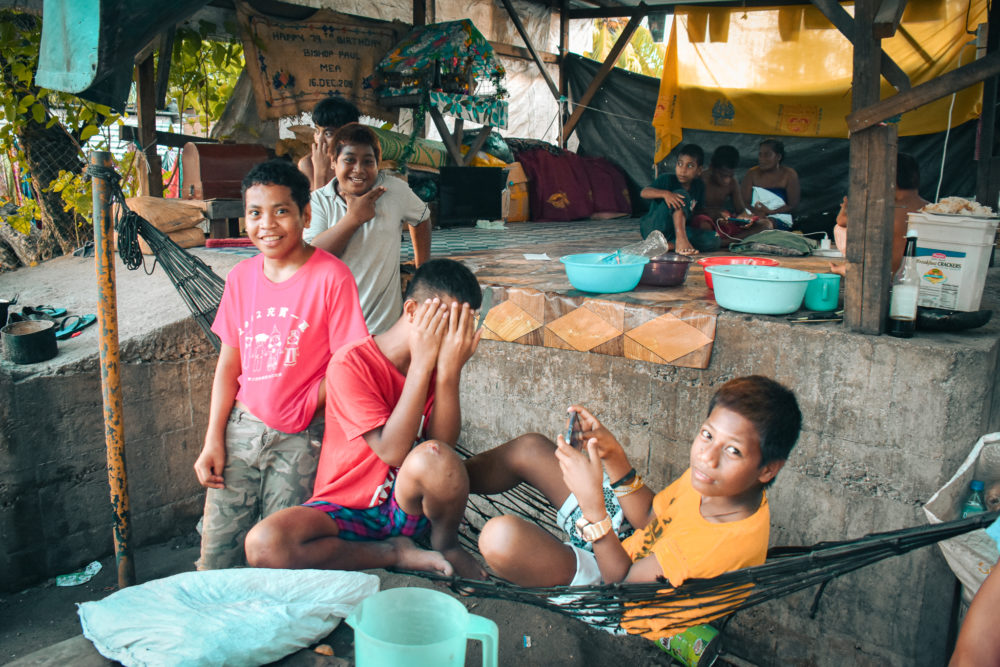
Family Living on a Japanese Bunker
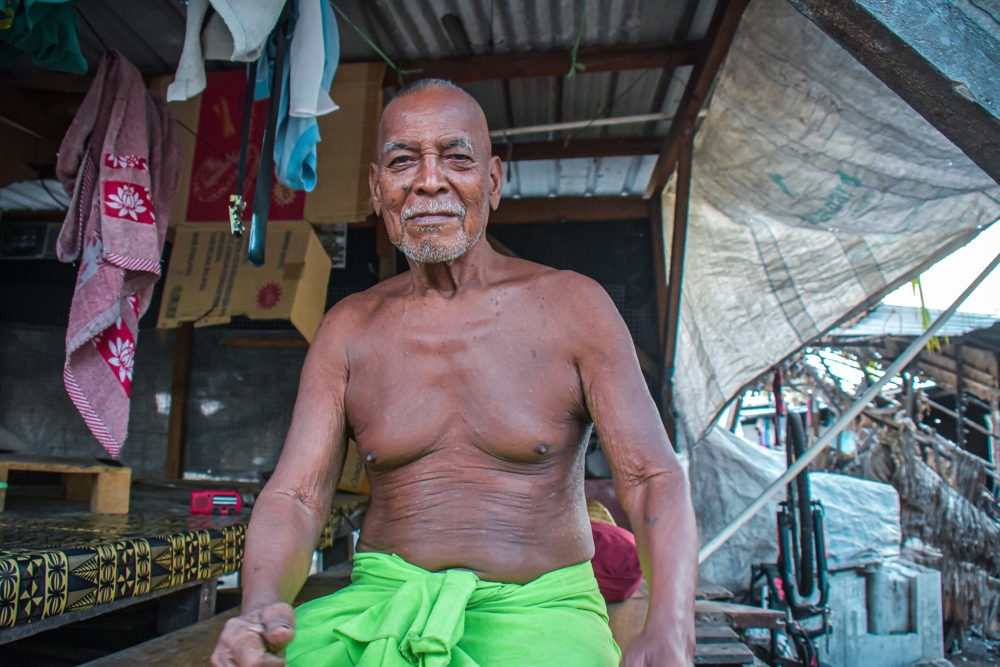
Family leaving in top of a Japanese Bunker
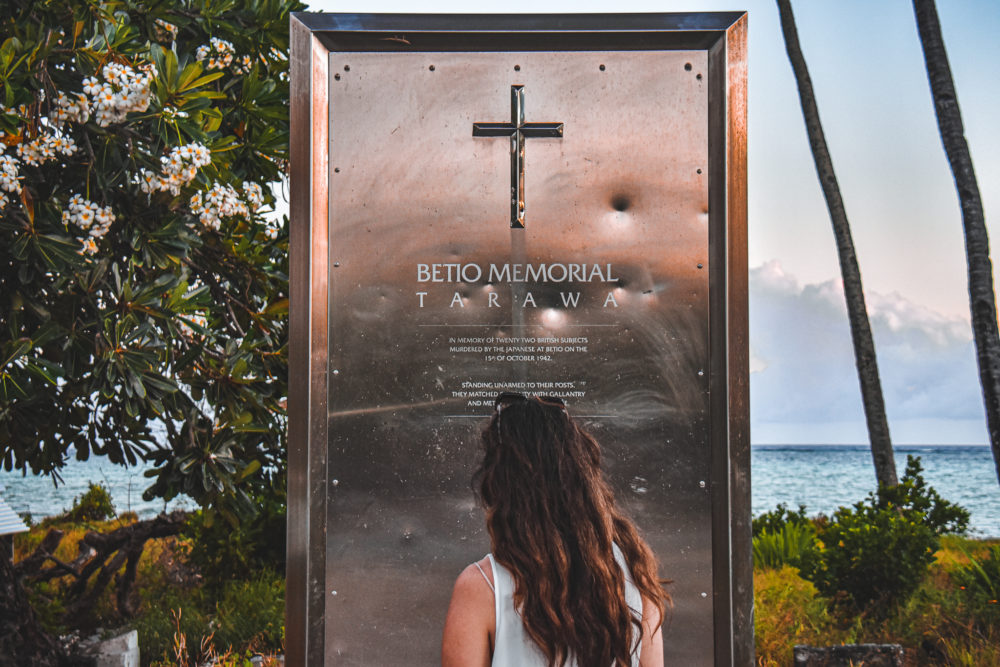
Paula in front of a Memorial
On our last full day, Paula and I hired a local from Betio to drive us to North Tarawa. There were no rental cars at the hotel so the man, a friend of the Betio lodge borrowed a car from his friend to take us to see the village life of rural Tarawa. As we drove further away from Betio, the island became less congested, beaches prettier, and houses and yards more traditional. To get to North Tarawa Island, you can either take a small boat at high tide or walk at low tide across water that is knee deep. We walked across the channel along with locals crossing on foot and by motorbike. In North Tarawa, there are few vehicles, and the people live a much more rustic traditional lifestyle. We visited a local family and they prepared coconuts for us and shared their traditions with us. We also had a nice coconut curry fish lunch at a nearby hotel with very rustic overwater bungalows.
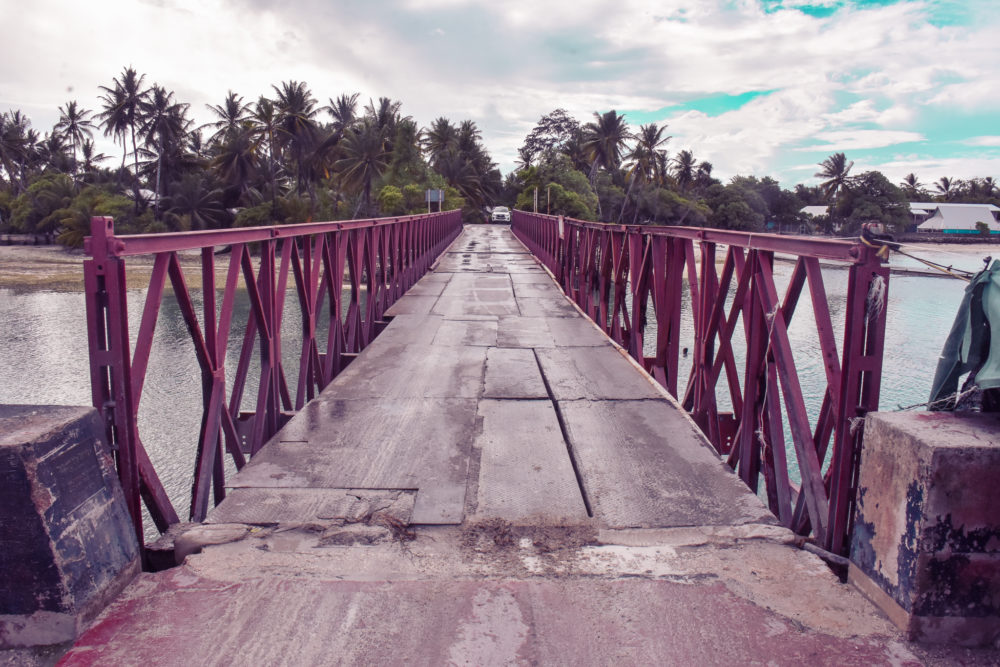
American marine Built Bridge Connecting tarawa Islands
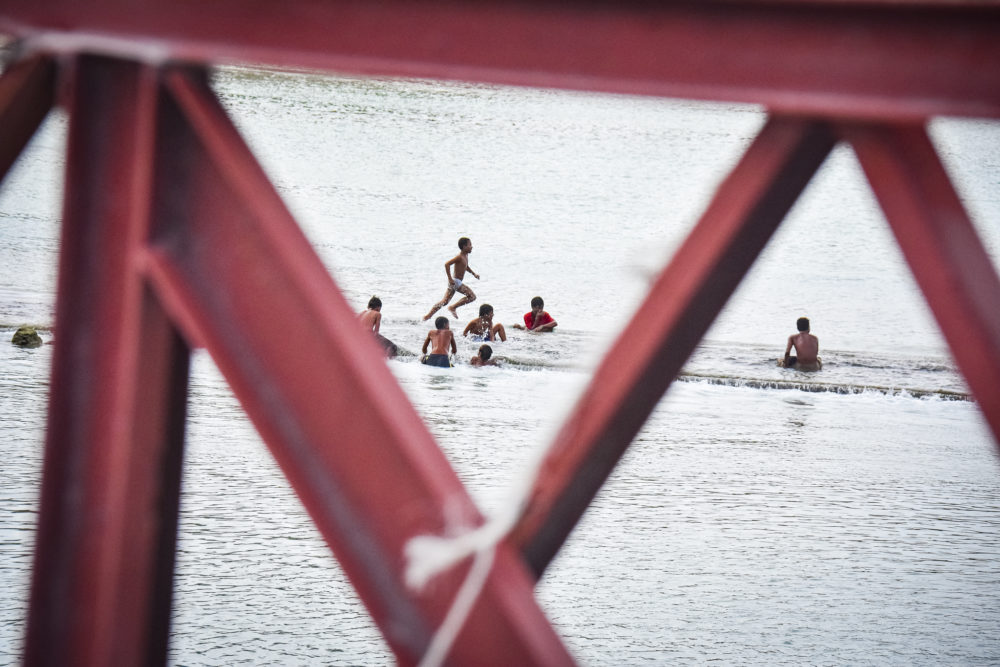
Kids playing in the ocean
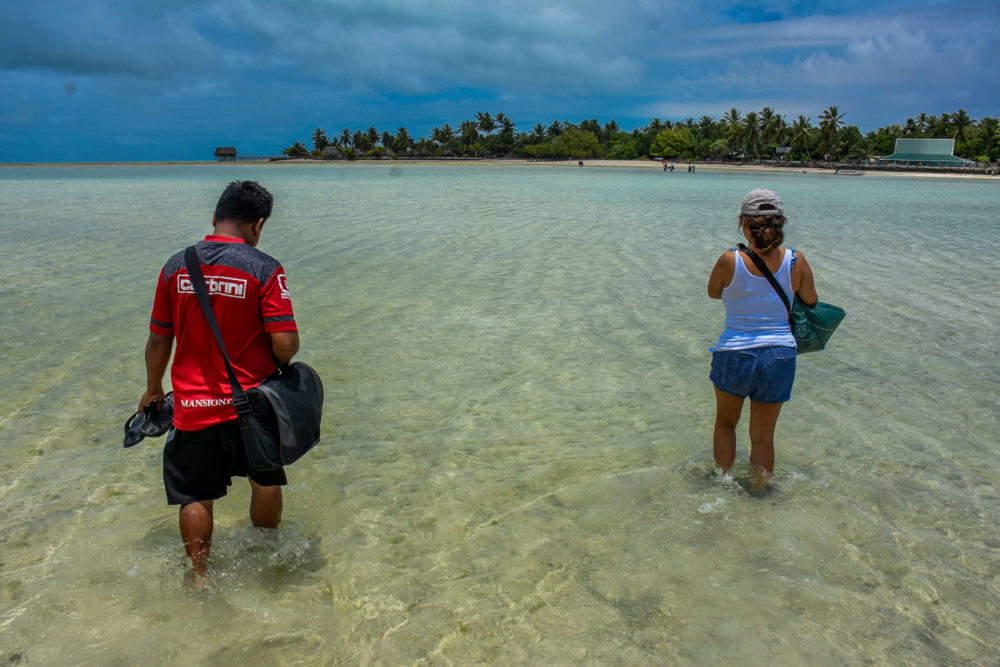
Crossing at low tide to North tarawa Island to visit villages and eat sea food
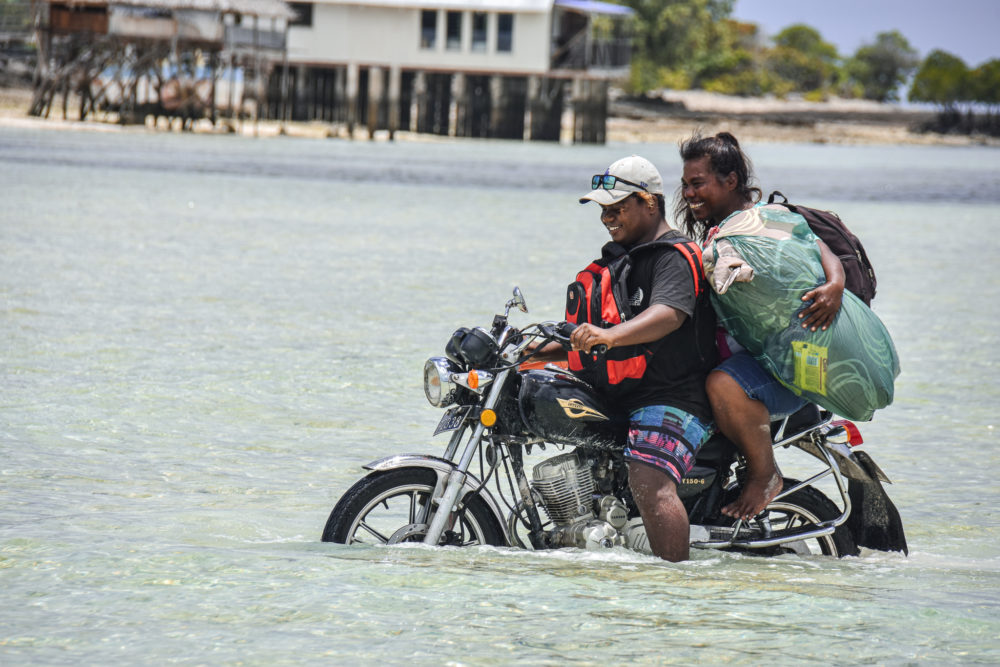
Tarawan Residents Crossing atlow tide to North Tarawa
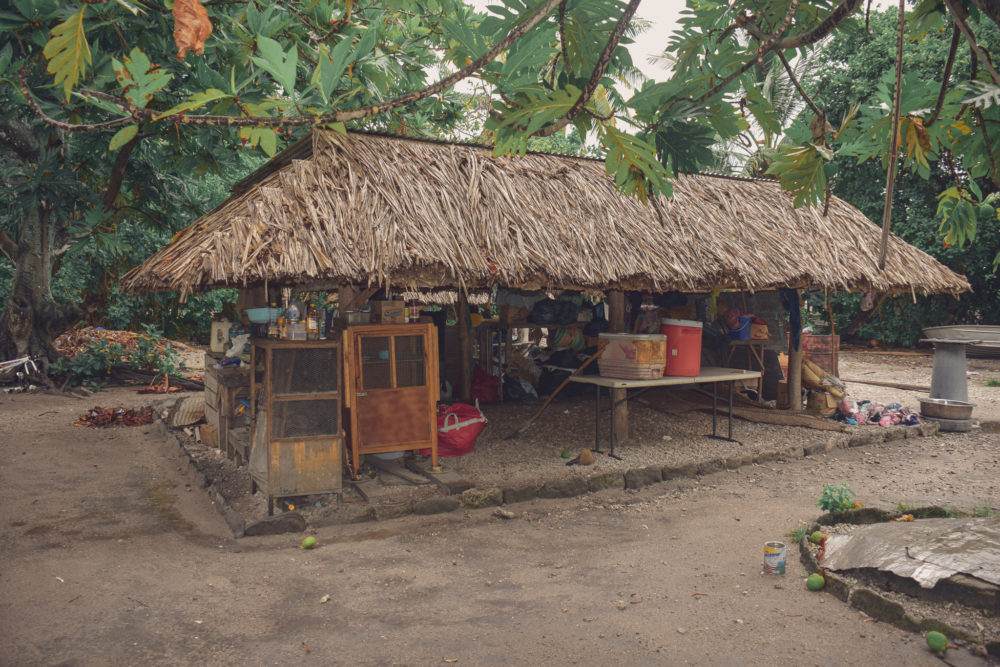
Typical Village House
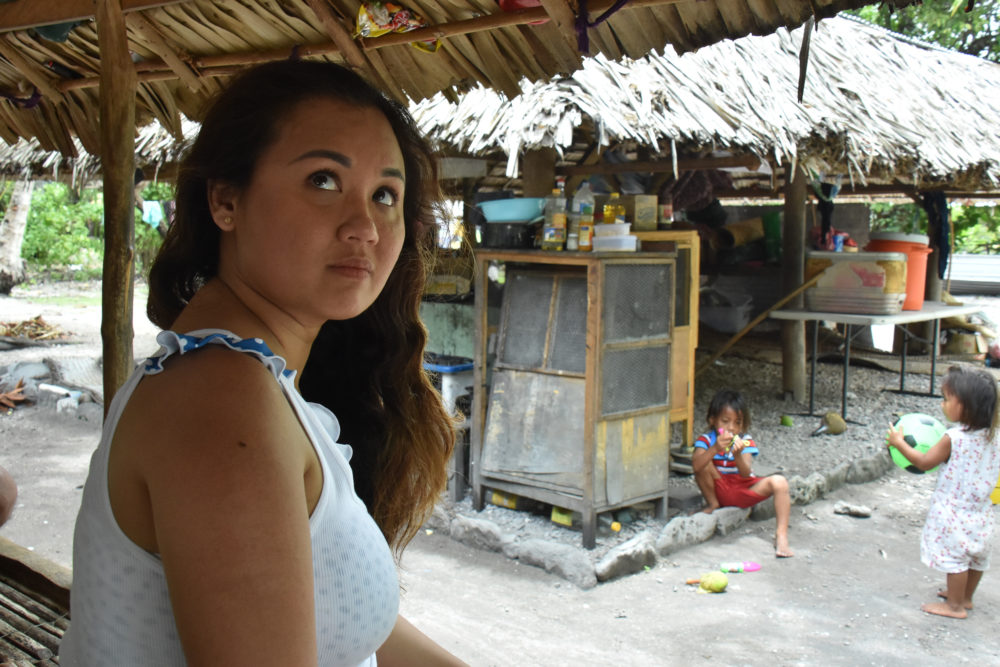
Visiting a Village Family
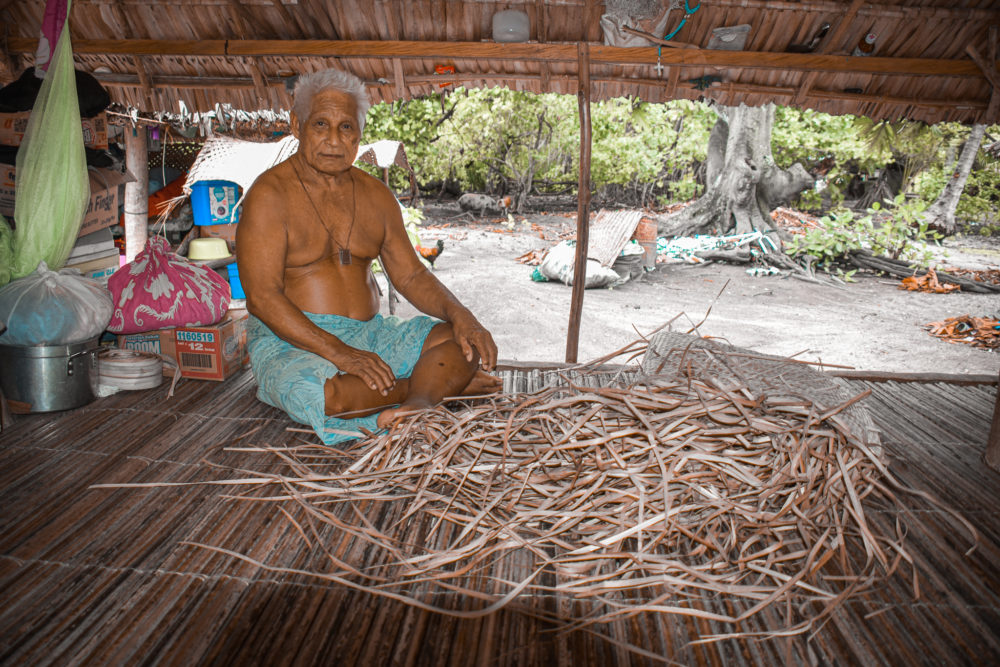
Visiting a Village Family
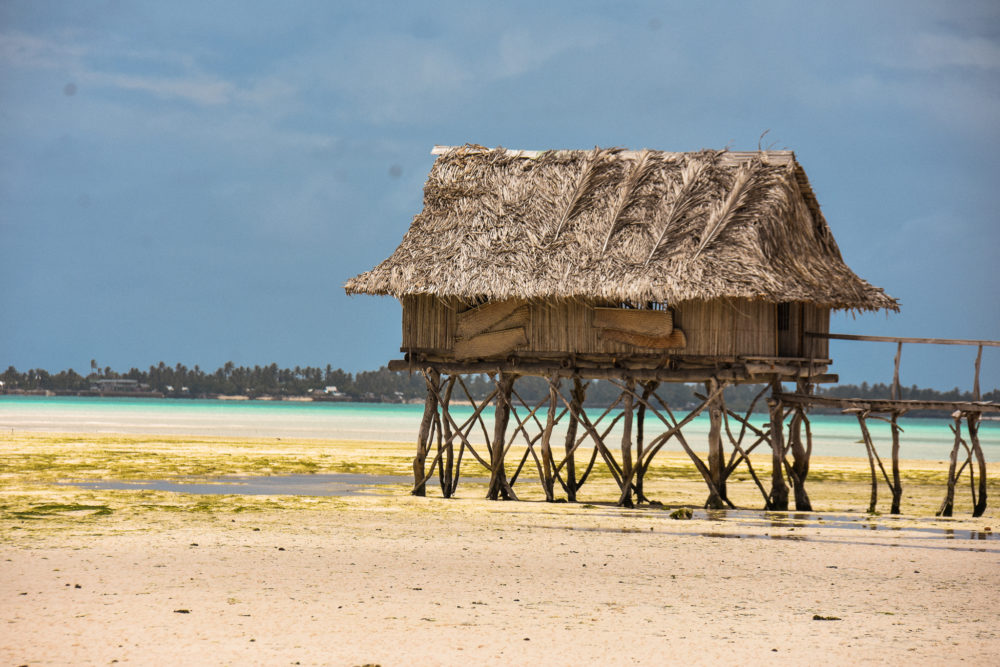
Poormans Abovewater Bungalows-low tide
At the end of our trip in Tarawa, we continued on to Fiji via 3 hour flight on a Max 8 Boing Fiji Airlines plane to catch our flight to Tuvalu.

